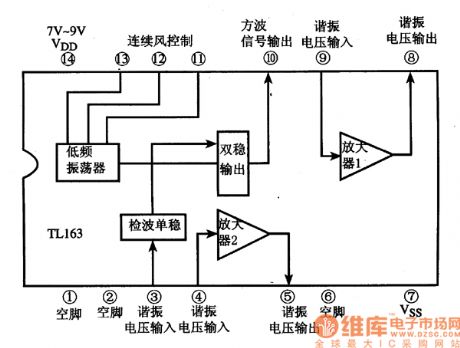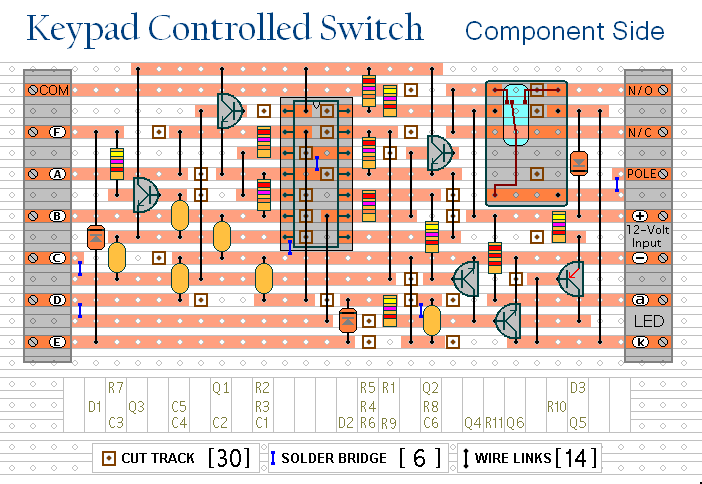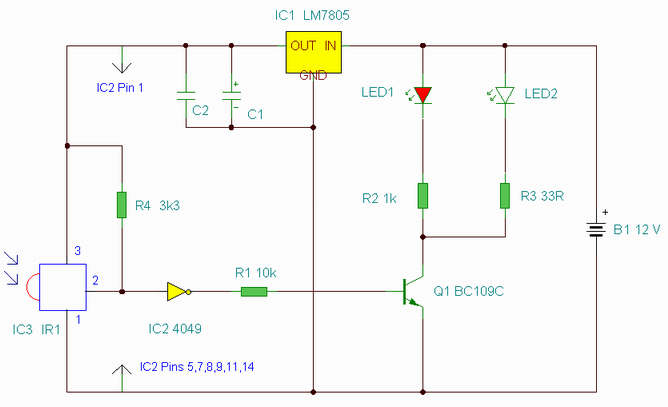
USB Ultra IR-Receiver v2.0 to PC remote control and power ON - OFF

This Atmel integrated circuit operates at a clock frequency of 12 MHz, facilitating communication between an infrared receiver and a personal computer. This setup enables the processing of signals by infrared receiver software, such as Girder. When a valid RC5 signal from the remote control is detected, a green low-current LED, connected through a 1.5 kΩ resistor, along with an opto-coupler powered by a 390 Ω resistor, is activated.
The circuit employs an Atmel microcontroller that is clocked by a 12 MHz quartz crystal oscillator, ensuring stable and precise timing for signal processing. The infrared receiver is connected to the microcontroller, enabling it to interpret signals transmitted from an RC5 remote control. This protocol is commonly used in remote control applications, allowing for seamless communication between the remote and the receiving device.
When a valid signal is detected, the microcontroller activates a green low-current LED, which serves as an indicator that a signal has been received. The LED is connected in series with a 1.5 kΩ resistor, limiting the current to prevent damage to the LED while ensuring sufficient brightness for visibility.
Additionally, the circuit incorporates an opto-coupler to isolate and interface the microcontroller with other components or systems, enhancing the overall reliability and safety of the design. The opto-coupler is powered through a 390 Ω resistor, which is selected to provide the appropriate current for the opto-coupler's operation, ensuring it can effectively transmit the signal to the next stage of the circuit without interference.
This configuration allows for efficient signal processing and provides a visual indication of operation, making it suitable for various applications where remote control functionality is required. The use of standard components such as the Atmel microcontroller, infrared receiver, and opto-coupler contributes to the reliability and effectiveness of the circuit.This Atmel IC, is clocked in the circuit with a 12 MHz quartz and provides a communication between the Infrared receiver and the PC, so that this signal can being processed by infrared receiver programs like Girder. As soon as a valid RC5 signal of the remote control arrives, a green low current LED with a 1. 5K resistance and the opto coupler with a 390 ohm resistor is supplied with power. 🔗 External reference
The circuit employs an Atmel microcontroller that is clocked by a 12 MHz quartz crystal oscillator, ensuring stable and precise timing for signal processing. The infrared receiver is connected to the microcontroller, enabling it to interpret signals transmitted from an RC5 remote control. This protocol is commonly used in remote control applications, allowing for seamless communication between the remote and the receiving device.
When a valid signal is detected, the microcontroller activates a green low-current LED, which serves as an indicator that a signal has been received. The LED is connected in series with a 1.5 kΩ resistor, limiting the current to prevent damage to the LED while ensuring sufficient brightness for visibility.
Additionally, the circuit incorporates an opto-coupler to isolate and interface the microcontroller with other components or systems, enhancing the overall reliability and safety of the design. The opto-coupler is powered through a 390 Ω resistor, which is selected to provide the appropriate current for the opto-coupler's operation, ensuring it can effectively transmit the signal to the next stage of the circuit without interference.
This configuration allows for efficient signal processing and provides a visual indication of operation, making it suitable for various applications where remote control functionality is required. The use of standard components such as the Atmel microcontroller, infrared receiver, and opto-coupler contributes to the reliability and effectiveness of the circuit.This Atmel IC, is clocked in the circuit with a 12 MHz quartz and provides a communication between the Infrared receiver and the PC, so that this signal can being processed by infrared receiver programs like Girder. As soon as a valid RC5 signal of the remote control arrives, a green low current LED with a 1. 5K resistance and the opto coupler with a 390 ohm resistor is supplied with power. 🔗 External reference





